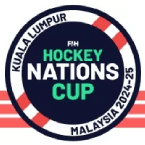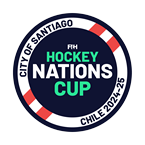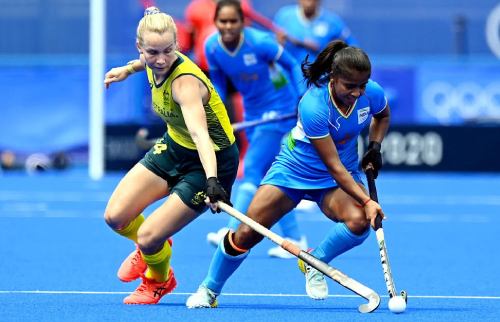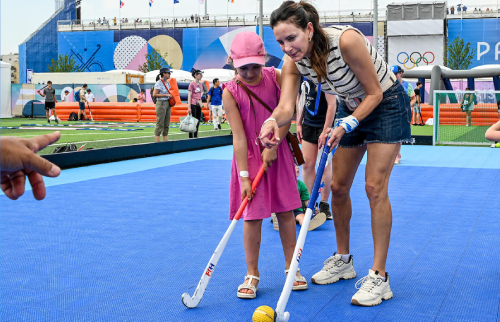
Double Olympian with Great Britain’s hockey team – in 2000, where he captained the team, and previously in 1996 – Jon Wyatt (195 international caps) Interim Senior Director, International Hockey Federation (FIH), gives his analysis of the Paris 2024 hockey competition from a sport and technical perspective.
What is your overall technical assessment of the hockey tournaments at Paris 2024?
Jon Wyatt: The Paris 2024 hockey tournaments were marked by intense competition, making them some of the most exciting in recent Olympic history. The high number of shootouts, draws, and close matches underscored how evenly matched the teams were. In the men’s tournament, 55% of the matches either ended in a draw or were decided by just one goal, a significant increase from the 34% seen in Tokyo. The women’s competition was similarly competitive, with 42% of games closely contested, matching the figures from Tokyo. What truly set Paris 2024 apart were the unexpected results that defied world rankings, adding to the excitement. Both the men’s and women’s finals being decided by shootouts—a first in Olympic history—highlights the even competition and unpredictability that made Paris 2024 a standout edition of Olympic hockey.
What are some of the trends that defined hockey at Paris 2024 when compared with previous editions of the Olympic Games?
Paris 2024 stood out for the exceptional defensive performances, in particular of the goalkeepers, earning it the reputation as the "Olympics of the goalkeepers." Goalkeeping was often the decisive factor in tightly contested matches, with keepers turning the tide in games that could have gone either way. For example, in the men’s competition, India’s match against Great Britain was heavily influenced by Sreejesh’s incredible goalkeeping. Both Pirmin Blaak and Anne Veenendaal were instrumental in the Netherlands winning the gold medals, especially in the shoot-outs, as was Ye Jiao in China’s semi-finals.
The impact of these performances was clear in the overall scoring statistics, with the men’s tournament seeing a 25% drop in goals compared to Tokyo—155 goals in Paris versus 209 in Tokyo. This decrease was not only due to lower penalty corner conversion rates but also improved defensive strategies and goalkeeping.
Interestingly, the women’s tournament maintained the same goal-scoring levels as Tokyo, indicating that while men’s hockey saw a shift towards stronger defences, the balance in the women’s game has not shifted significantly during the last Olympic cycle. These trends highlight a broader shift in the sport, with defensive tactics and goalkeeping becoming increasingly crucial in determining match outcomes.
Another noticeable trend at Paris 2024 was the significant impact of cards on the game and how teams adjusted their strategies when down a player. In past tournaments, teams might have maintained their tactics despite being short-handed, but in Paris, the effect of receiving a card—whether green or yellow—was much more pronounced. Teams frequently retreated into a defensive posture, often pulling back into their 23-metre area, leading to classic attack-versus-defence scenarios during penalties. Strategic adjustments during these periods were critical, as teams recognized that maintaining an aggressive stance with ten players was nearly impossible, especially in the intense Paris heat. Teams had to maintain their discipline, aware that even a minor infraction could dramatically shift the game’s momentum.
Penalty Corners are a big part of modern hockey, but Paris 2024 saw a lower conversion rate than in previous Games. What do you think was the reason behind this change?
The effectiveness of penalty corners (PCs) at Paris 2024 was notably reduced, and this shift can largely be attributed to the improved quality of penalty corner defence and goalkeeping. Across the board, the conversion rates for PCs were significantly lower than expected. For instance, in the men’s tournament Germany and Belgium were the best, converting 25% of their penalty corners, while Argentina and South Africa were at 20%, but the remaining teams converted at less than 1 in 5. This drop in conversion rates didn’t stem from a decline in attacking prowess but rather from the remarkable advancements in defensive strategies and goalkeeper performance.
Over the past few years, there has been a growing competence among teams in rushing during penalty corners, with specialised players now dedicated to this high-pressure role. The development of protective gear and the increasing bravery of defenders have also played a significant part in this trend. The fact that most teams now deploy two rushers means that goalkeepers can concentrate on protecting one side of the goal, which further complicates the attackers' efforts and has shifted how teams approach this crucial aspect of the game.
Hockey has largely moved away from a 2-dimensional sport to a 3-dimensional one over the past decade. Was Paris 2024 a good showcase for how much value the aerial game adds to Hockey?
Paris 2024 highlighted the growing importance of the aerial game in modern hockey, a trend that has evolved over the past decade. The aerial pass has become a vital tool for breaking down well-organised defences, especially in high-stakes matches where ground-level play is heavily contested. One standout moment was during the women’s quarterfinal between Germany and Argentina, where Nike Lorenz’s 25-metre aerial pass whilst running at full speed was an amazing piece of skill that set up a crucial goal, perfectly eliminating the last defender and allowing her teammate to reach the ball just before the goalkeeper, winning the penalty stroke which was converted to give Germany the lead.
The aerial pass offers teams a way to bypass densely packed midfield and defensive lines, creating opportunities on the far side of defensive structures. In a tournament as competitive as Paris 2024, where defences were tight and the margin for error minimal, the aerial pass emerged as a key tactic, stretching defences and creating goal scoring opportunities.
How do you reflect on the level showcased by teams that ultimately did not qualify for the quarterfinals but gave a great account of themselves in the group stage?
The teams that didn't make it to the quarterfinals at Paris 2024 still demonstrated a very high level, reflecting the growing depth in international hockey. On the men’s side, all the teams that qualified to the Olympic Games had participated in the Pro League over the past few years, underscoring the importance of regular, high-level competition. The Pro League offers these teams consistent exposure to top-tier opponents, which clearly contributes to their readiness and resilience in major tournaments. China women are another good example, as they have been steadily using the Pro League to continue improving their standards and it paid off with a historic silver medal at Paris 2024.
This was also evident in how closely contested the group stage matches were. Many matches were decided by narrow margins, and even though some teams like New Zealand men and South Africa women ended up with five pool stage losses, the actual gameplay was much tighter than the results suggest, with most matches decided by one goal, which on another day could easily have ended in a different result.
This shows that the gap between the top teams and the rest is narrowing, thanks in part to the annual FIH Pro League and Nations Cup. The introduction of Nations Cup 2 in the coming year will further support this trend by providing a clear pathway for emerging teams to progress and challenge the established powers in international hockey. The competitive structure now in place promises to keep elevating the standard of play across all participating nations.
Looking at the bigger picture, what do you think about the overall performance of the umpires during Paris 2024?
The umpiring at Paris 2024 was of a very high standard, with the umpires putting in a level of preparation and performance that exceeded previous Olympic Games. The umpiring team underwent extensive training and preparation in the 10 months leading up to the Games, including tailored fitness training and individual assessments, online group and individual sessions with the excellent Umpire Manager team, and a pre-tournament camp in Paris to finalise their preparations. This comprehensive approach ensured that the umpires were not only physically prepared but also mentally sharp and well-coordinated as a team. The results were evident, with feedback from players, coaches, and officials praising the quality of umpiring throughout the tournament.
The successful implementation of mixed-gender on field umpiring, which has become standard in the FIH Pro League, was well-received, and while only employed in a small number of matches in Paris as it was the first time in an Olympic Games this had been done, the feedback was overwhelmingly positive and reflects the gender equal approach we have as a sport.
The use of the Hawkeye system for video umpiring also significantly enhanced decision accuracy. With more angles, higher-definition footage, and advanced slow-motion capabilities, video umpires were able to make precise calls, reducing the potential for errors. The system handled over 240 video referrals during the tournament, and while no system can guarantee 100% perfection, the combination of highly skilled video umpires and cutting-edge technology ensured that officiating at Paris 2024 was of the highest possible standard, contributing to the overall fairness and integrity of the competition.


























